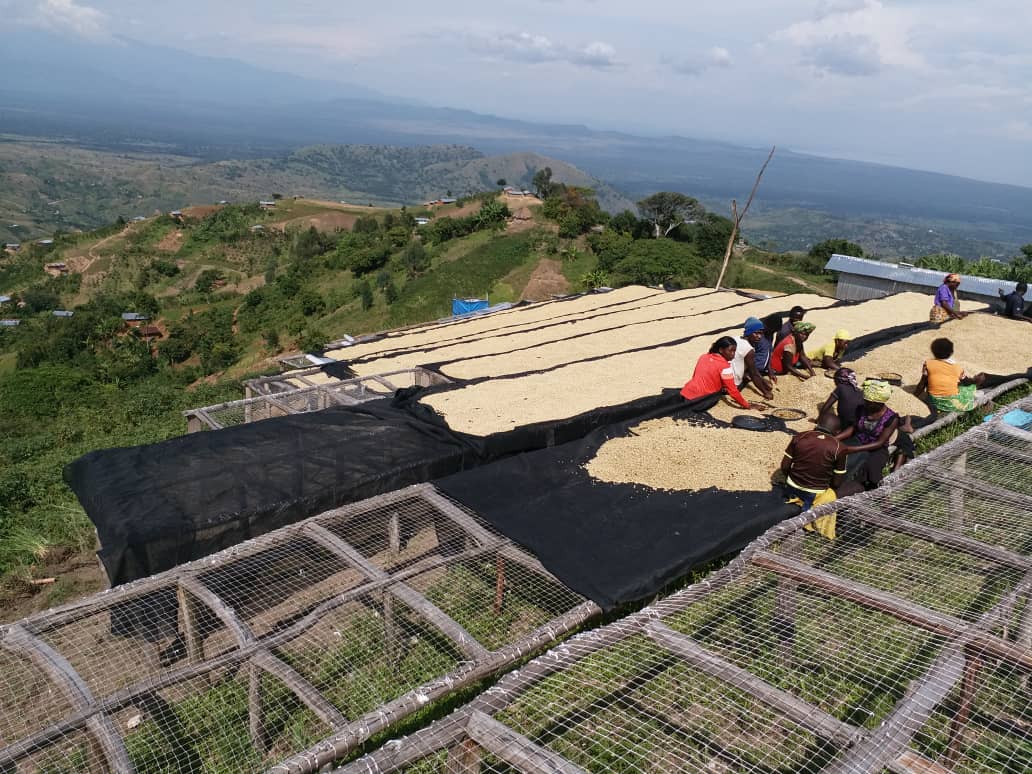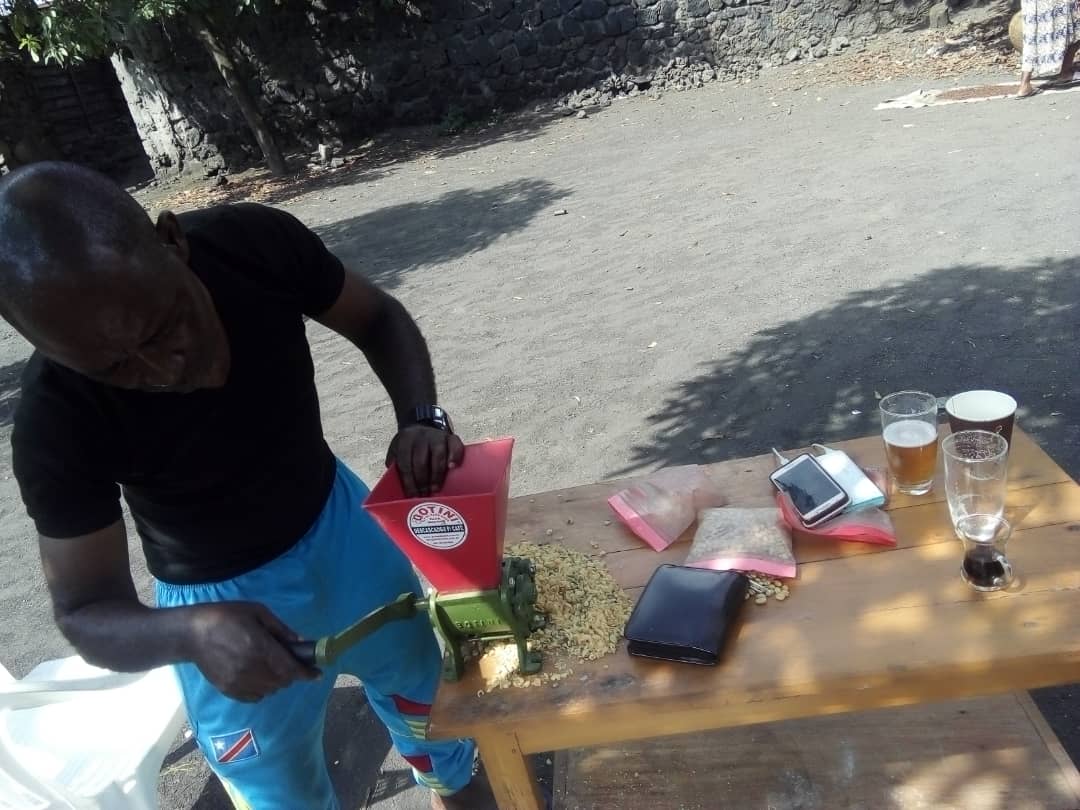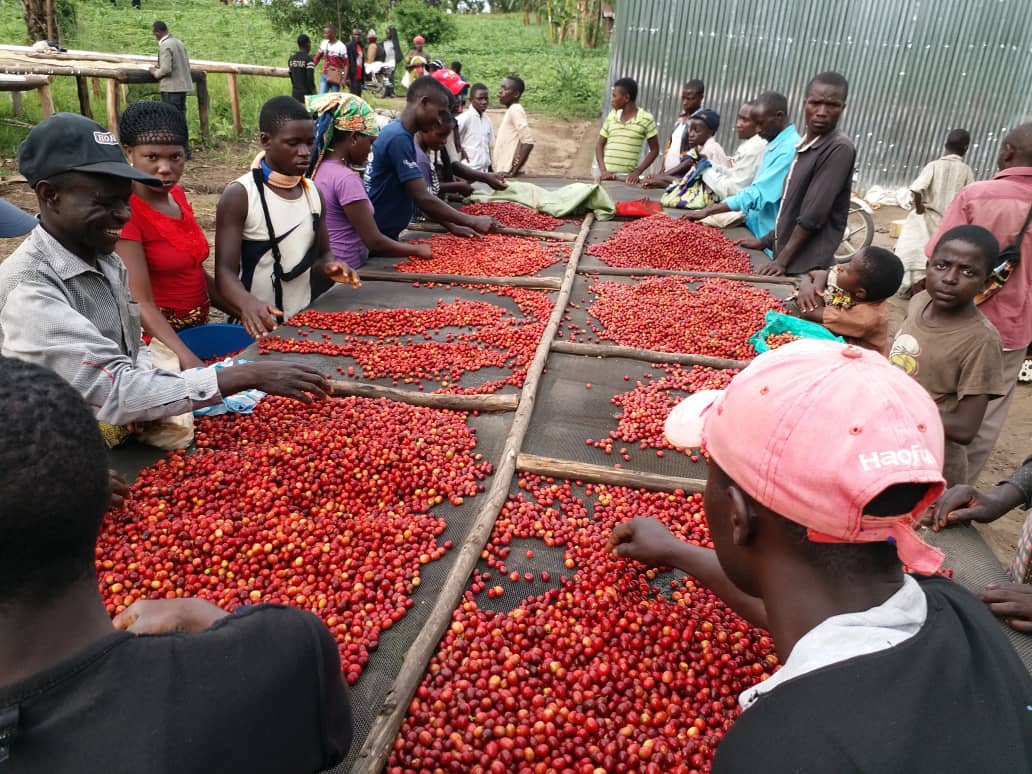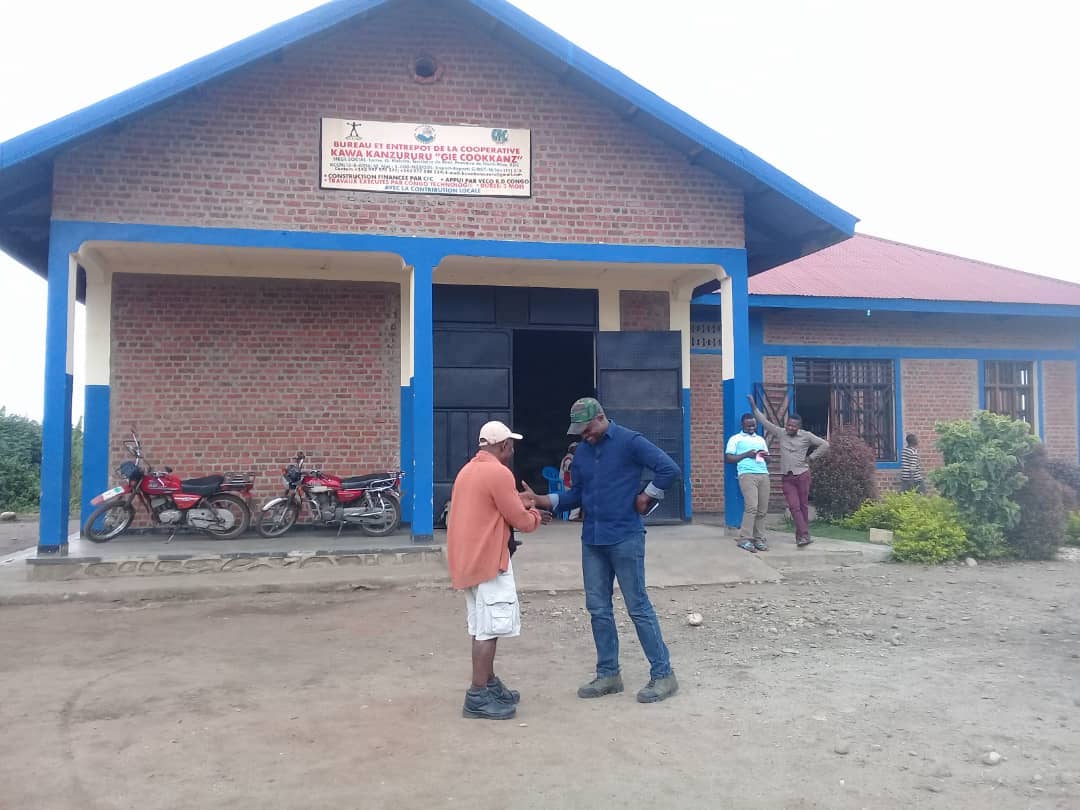
Coopade Cooperative, Vughole Washing Station, located near the border of Virunga. Photo courtesy of Adelard Palata.
Virunga National Park, the first national park ever established in Africa, sits on the eastern edge of the Democratic Republic of Congo and is home to one third of the world’s mountain gorillas, more than 700 bird species, and more than 200 mammal species. It also sits in the backyard of thousands of smallholder farmers, with more than 7,000 coffee-farming families living within a day’s walk of the 3,000-square-mile park.
This region, in Eastern Congo, has endured decades of conflict and instability. Now, a European Union backed project, implemented by the nonprofit Farm Africa, will focus on improving farm management, production, coffee quality, and market access for two cooperatives: Kawa Kanzururu (1,642 members among 22 micro washing stations), and Coopade (4,159 members among 11 micro washing stations). More information on the project, its relationship to the park and the two cooperatives can be found here.

Adeldard Palata of Virunga National Park hulling coffee at his house. Photo courtesy of Adelard Palata.
At the Specialty Coffee Association Expo this year in Boston, I had the opportunity to speak with Adelard Palata, an agronomy manager at Virunga National Park, who helped me understand more about the deep relationship between Virunga National Park and the coffee sector.
Susan Heller Evenson: Adelard, I understand you have been in coffee for 30 years. Can you tell us your history with coffee, and the importance of coffee for you?
Adelard Palata: First of all I must say that for me, coffee is life. I studied thanks to coffee, and [to] the cultivation of coffee of my parents and my grandparent grew and produced. Coffee is also an activity for me since I started working in coffee in my parents’ fields when I was a child. I thought, “when I finish studying, I want to grow coffee.” After I started producing coffee after my studies, I started to understand that coffee is actually a product you can sell — that you can drink it and sell to consumers! Since 1991, my father started to train me in the selling of coffee. I did this in both the East and the West of my country, which is DR Congo. Actually, my father has a coffee factory, a mill, although we don’t have enough money right now to have it be operational. So yes, coffee is really my life.

Adelard, his wife Jomime, and his daughter Victoire all roast the coffee on-site at their house. Photo courtesy of Adelard Palata.
SHE: What are some of the most impressive aspects of Virunga National Park?
AP: In fact, Virunga National Park is one of the oldest institutions of the DR Congo. There are very rare species, in particular the mountain gorilla. There is an extraordinary, very active volcano, which is an incredible site to visit. The park actually has the biggest diversity of bird life on the entire planet. The park has strong leadership management, particularly the leadership of the park director, Emmanuel de Merode, who fights night and day to protect the park and the environment. I can’t sum up the park in two or three sentences; all I can say is that I really beseech and urge you to come and see it for yourself.
SHE: I hear that your nickname is “Adelard Coffee.” How did you get that name?
AP: My family and I mill, roast, and grind all the coffee for the staff and visitors of Virunga National Park. The way I roast the coffee is through a homemade, specially adapted pan that roasts the coffee over charcoals.

Coopade Cooperative, Kyasenda Washing Station, 500 meters from the border of Virunga National Park. Photo courtesy of Adelard Palata.
SHE: What can you tell us about the relationship between Virunga National Park and the coffee producers nearby?
AP: The coffee farmers live right near the national park, and they have lived there for many years. Coffee is grown around the park and provides a livelihood, but the problem is that the coffee is often not processed well, and there are not good markets for it. Virunga National Park has been thinking and discussing together with farmers to think how they can get together to help improve the coffee production and marketing for the farmers who live around the park.
The coffee farmers around the park are really happy to hear that Virunga National Park has been thinking and working on a strategy for how they can be a good support to help farmers producers to process their coffee better and find international markets. In this way, we will develop a work program, a collaboration between the population around the park and Virunga National Park, with two objectives.
The first objective for Virunga is to promote and improve the standard of living for those who live around the park — and coffee growing is one way that quite quickly can help the population of producers to improve their lives.
The second objective is to see how the population in the park can indirectly contribute to the security situation of this world heritage site. We are aware that if we don’t work on the environmental side of things, in 10 or 20 years there won’t be any coffee to consume. For sustainability for coffee, it’s really important for farmers to understand that protecting the trees and protecting the environment is really, really important, and that the animals continue to be able to survive in the park or otherwise the animals and nature will disappear, and that will have a knock-on effect on the farmers’ livelihoods.
If the environment is protected, it’s an advantage for everybody, even those who live far away from the park, because even those who live far away from Virunga will get the benefit of this protection of the animals and environment, and the animals will continue to be able to live there, so it’s actually an advantage for everybody.

Kawa Kanzaruru Cooperative, near the the border of Virunga National Park. Photo courtesy of Adelard Palata.
Susan: This is your first time visiting the United States as well as the SCA Expo. What are your first impressions?
AP: It’s been a very welcoming place. It’s really good to be here and to learn more about what others are doing about coffee quality, and to learn about techniques and processes. I’m learning a lot and it’s great to have these contacts and relationships.
Susan: What is one thing you would like coffee consumers to know about Congo and coffee from Congo?
AP: Congo is a place where coffee can be cultivated for a long time. There’s land, a great climate, it rains almost every day, is sunny almost every day, and all the conditions are great for growing coffee. And if there is interest to support coffee growers in Congo, try the coffee. If you drink it yourself, I think you will find that it’s a great, high-quality coffee.
SHE: Thank you, Adelard, for your time and for sharing with us about Congo, Virunga, and Congolese coffee.
Susan Heller Evenson
Susan Heller Evenson is a trader and position analyst at Atlas Coffee Importers. She is based in Seattle.
Comment
2 Comments
Comments are closed.






This is great indeed. We at CURAD http://www.curadincubator.com work and support farmers on the Eastern side of the Virunga’s in Uganda. We are happy to do our part and support the cooperatives with trade linkages.
I would welcome the opportunity to do technical advisory work once again in DRC Congo. My expenience in fully washed and specialty arabica has been in Rwanda, Kenya and Tanzania with some short technical missions to DRC Masisi and DRC Mahagi coffee.
Regards,
Alan Finney
Coffee agribusiness & washing station management